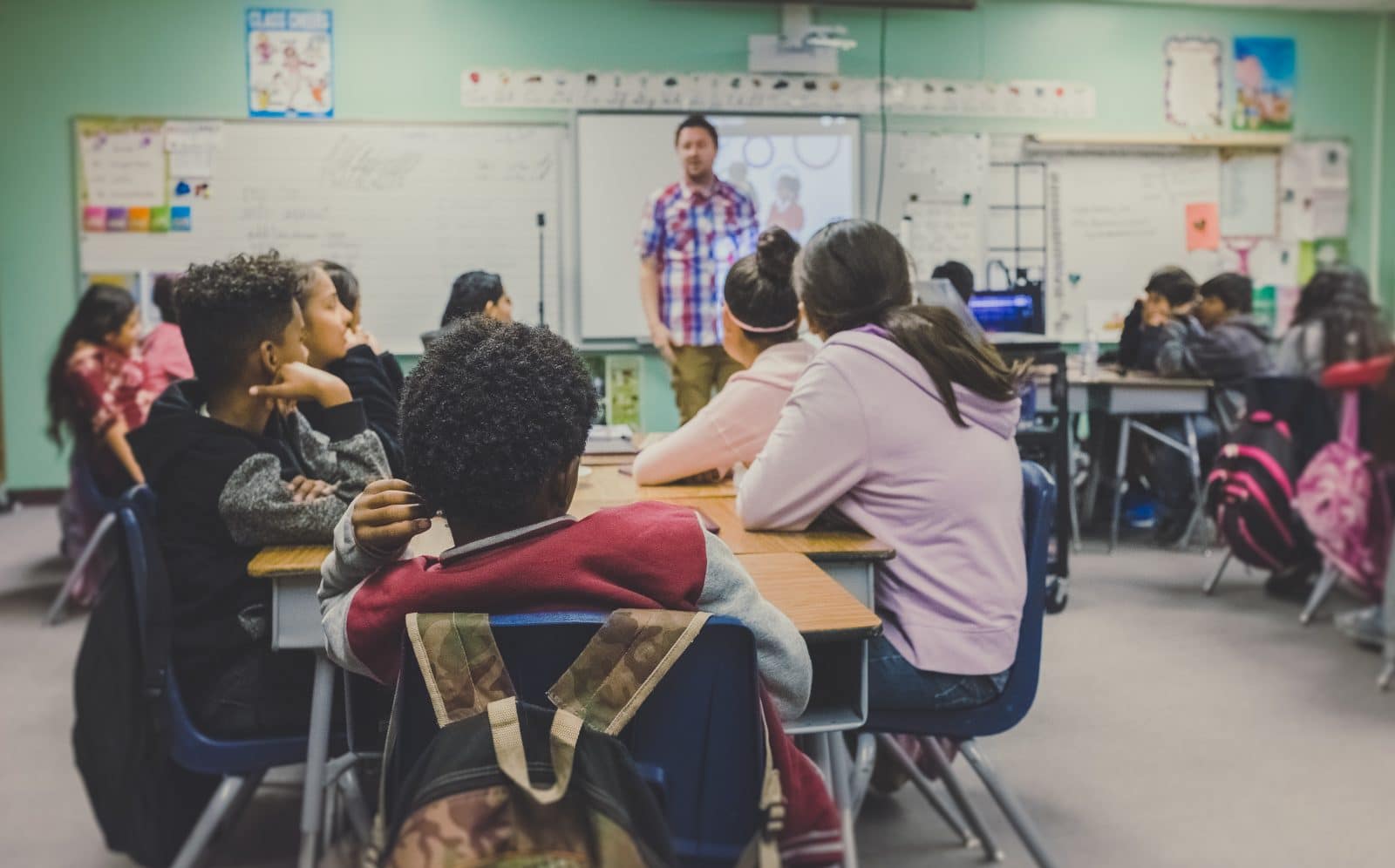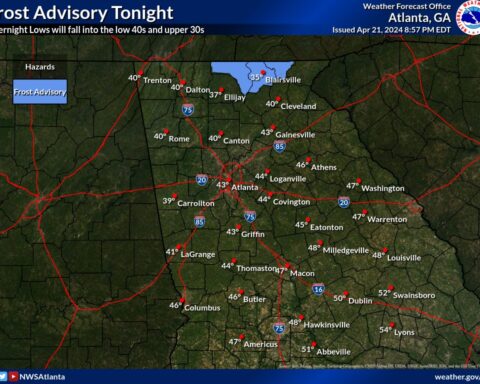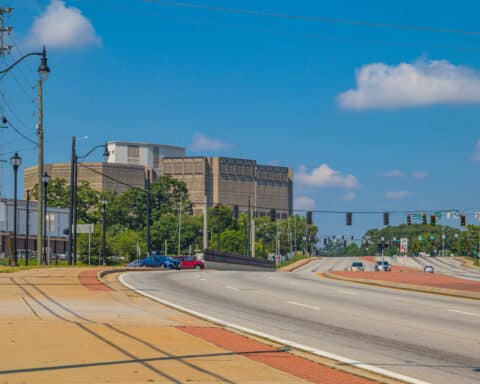For Haven Yancey of south Georgia’s Berrien County, fifth grade was the first year she didn’t get her own textbooks.
Now 19, Yancey was in elementary school during the economic fallout from the Great Recession and the crippling state budget cuts that marked those years. When she wanted to study from home, she had to fill out a form to request a textbook and hope her classmates hadn’t already checked out all the shared copies.
“I couldn’t imagine how it is for people who didn’t graduate high school and don’t remember how they did things in school with math and everything,” said her mom Santana Yancey, a nurse. “We were having to Google things. A lot of people in Nashville and Berrien don’t even have internet. If they don’t have enough education, how are they supposed to help their kids?”
As a 2008 housing crash spread misery across the economy, millions of Americans lost their jobs and then defaulted on their mortgages. Tax collections plummeted, prompting big spending cuts, including to the Quality Basic Education (QBE) formula, which pays a large share of the cost of Georgia’s public schools.
Georgia underfunded the education formula by about $1 billion each year between 2010 to 2014, said Georgia Budget and Policy Institute analyst Stephen Owens. That shortfall led to school districts across the state furloughing teachers, increasing class sizes and shortening school calendars significantly from the standard 180 days.
On Friday, the Senate approved a budget with a mandate to slice 11% of every state department’s spending, for a total of $2.6 billion. Since education accounts for about half of the $28.1 billion budget for next year that House members approved in March, it is primed to take the biggest hit – more than $1 billion in the Senate proposal.
That suggests Haven’s younger sisters Heaven and Halen, now entering middle school and high school, could suffer through the same cost-cutting austerity measures as their older sister.
“We have a pretty good idea of what these cuts will look like because of the cuts to the public schools during the Great Recession,” Owens said.
Achievement gap
Berrien County is largely agricultural, and nearly 22% of residents live below the poverty line, according to U.S. Census Bureau estimates. Georgia’s poverty rate is about 14%.
School districts in poor, rural areas were harder hit by the 2008 recession than more affluent districts, Owens said. In some cases, poorer districts lost about twice the state dollars per student as wealthier areas.
Smaller, poorer and rural districts were also more likely to lose their arts programs, said John Palmer, band director at Walton High School in largely affluent east Cobb and spokesman for the teacher advocacy group TRAGIC. During the last recession, Palmer was teaching at nearby Dickerson Middle School.
“My kids were going to elementary school at the time, and almost every elementary school in Cobb had to form a foundation in order to keep all of their specials,” Palmer said. “We’re fortunate in that we’re in a county that has a large tax base, so they were able to do something like that, but around the state, we saw music, physical education and art programs get dropped all over the place.”
That’s just what happened in Berrien County, Yancey said.
“Haven, she played the trumpet, she started playing in sixth grade and played all the way to 8th,” Yancey said. “Ninth grade was the year they got rid of the music program in middle school. It was very frustrating. My other daughter, Heaven, she likes to draw and paint and stuff, and they didn’t have an art program. They have an art class in high school here in Berrien County, but not in middle school.”
Nearly half of Georgia’s school districts cut or eliminated art or music between 2009 and 2014.
Teaching children creative skills helps them grow as people as well as form friendships with their peers, and that’s even more necessary as many children continue to be isolated at home during the COVID-19 pandemic.
“It’s not a perk to go to art, it’s not just drawing, it’s working with the entire child and trying to develop fully, not just focusing on one aspect of school,” Palmer said. “With all the time kids have been out of school, they’ve been able to do some of their classes online, but they’ve not been able to have the interaction of performing and their friends, they haven’t been able to have that feeling of performing and working with other students, and that’s what they’re really missing.”
New normal
Georgia’s performing arts students might need to wait awhile before the band gets back together – or the orchestra, theater company or acting troupe.
Many Georgia schools are considering teaching classes at least partially online in the fall to avoid the spread of coronavirus infection. That will mean school systems will pick up even more expenses even as state support is choked off. More frequent cleanings of public areas as well as purchasing computers and Wi-Fi hotspots for students who don’t have them at home will cost more money for already strained schools.
“There might have been some marginal savings in the late spring because school buses weren’t running, you didn’t need to run A/C, but the idea that those will continue into the fall, I think is unproven,” Owens said. “A lot of school districts are going to have a hybrid model where some kids are in sometimes and some aren’t. When you consider the needs of the schools to protect students and workers, those all have extra costs.”
Just the cost of driving kids to and from school is likely to add a major new expense.
Some school districts’ reopening plans call for staggered schedules, with some students beginning and ending their school days later than their peers to avoid close contact. Those plans mean running more school buses with fewer riders and paying more for drivers, fuel and maintenance, said Georgia School Superintendent Association Executive Director John Zauner.
“You’d have them running buses continuously, based on the social distancing guidelines, putting kids in every other seat,” he said. “From a standpoint of practically getting that done, you’d be running buses all day getting kids back and forth to school, and obviously, instructional time would be hindered.”
To make matters worse, schools receive about the same amount of state school bus funding now as they did in the 1990s during the Clinton administration, Owens said, while the population has grown and fuel and maintenance are more expensive.
“That 11 percent cut is going to make an already bad situation a crisis,” Owens said.
Lasting damage
The recession’s pain lasted longer for Georgia schools than it did for the nation’s economy, Owens said.
“The Great Recession lasted a year and a half, and the state cut billions from the public schools in the years that followed,” he said. “Georgia schools weren’t fully funded until 2018, and by that point, our economy had been growing for years.”
Some districts still haven’t recovered from the era of annual $1 billion state spending cuts, Owens said.
“The furloughs hadn’t stopped until about a year ago, and in some districts, they’re still only doing four days of school a week, in some of the smaller districts, just as a cost-saving measure,” he said. “So saying that we fully funded schools for a year and now we’re coming back for a billion dollars in cuts, it’s heartbreaking.”
Dozens of Georgia organizations, including the Georgia Budget and Policy Institute, have urged Kemp and lawmakers to try to increase revenue before cutting spending.
Palmer and others support raising the state tobacco tax.
“If we just raise that to the national average, that would eliminate about half of the budget cuts for schools that we’d have to make,” he said. “We give special interest breaks to all sorts of corporations.”
If the planned $1 billion cut moves forward, it will be a sad farewell for the class of 2021, Palmer said.
“Seniors this year have already gone to school with over $9 billion in austerity. Their first grade year, they had a $1.3 billion cut for schools, and now they’re looking at another billion-dollar cut. Do we really want to bookend this senior class coming up with billion-dollar cuts to their education?”
Tough time to be a teacher in Clayton County
The recession-era years were a tough time to be a teacher, said Stephanie Smith, who taught language arts at Clayton County’s Riverdale Middle School during the 2015-2016 school year.
Clayton County was one of the country’s hardest hit communities during the foreclosure crisis. More than half of the homeowners who stayed current on their mortgage owed more than their house was worth. And plummeting home values meant the county’s tax base crashed just as the state funding dropped.
Clayton County Schools lost over 20% of its teachers between 2009 and 2015. Nearly 900 teacher contracts were not renewed during that time.
For those who remained, morale plummeted and teaching became nearly impossible, Smith said.
Smith, who previously taught in Cobb County, left teaching after her year at Riverdale Middle School and now runs her own business. She still occasionally teaches as a substitute.
Smith worries the state’s planned cuts to education will make it even harder for teachers to help students learn, especially children who already face challenges due to poverty and family situations.
“The kids who need the most help will not get it,” Smith said. “Many students in Clayton schools are raised by grandparents, and they are the ones that will be affected the hardest,” she said.
Disclosure: This article may contain affiliate links, meaning we could earn a commission if you make a purchase through these links.






